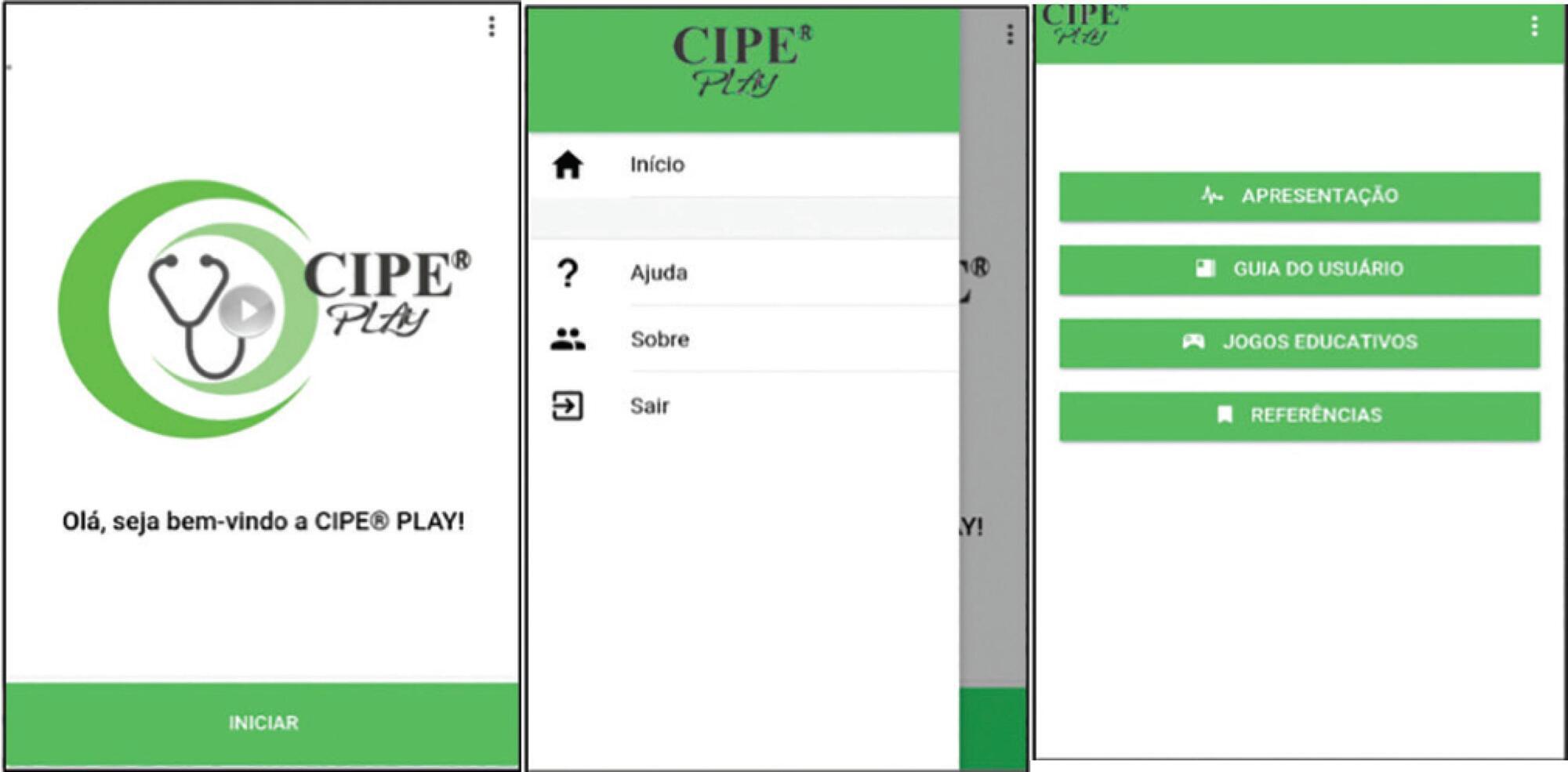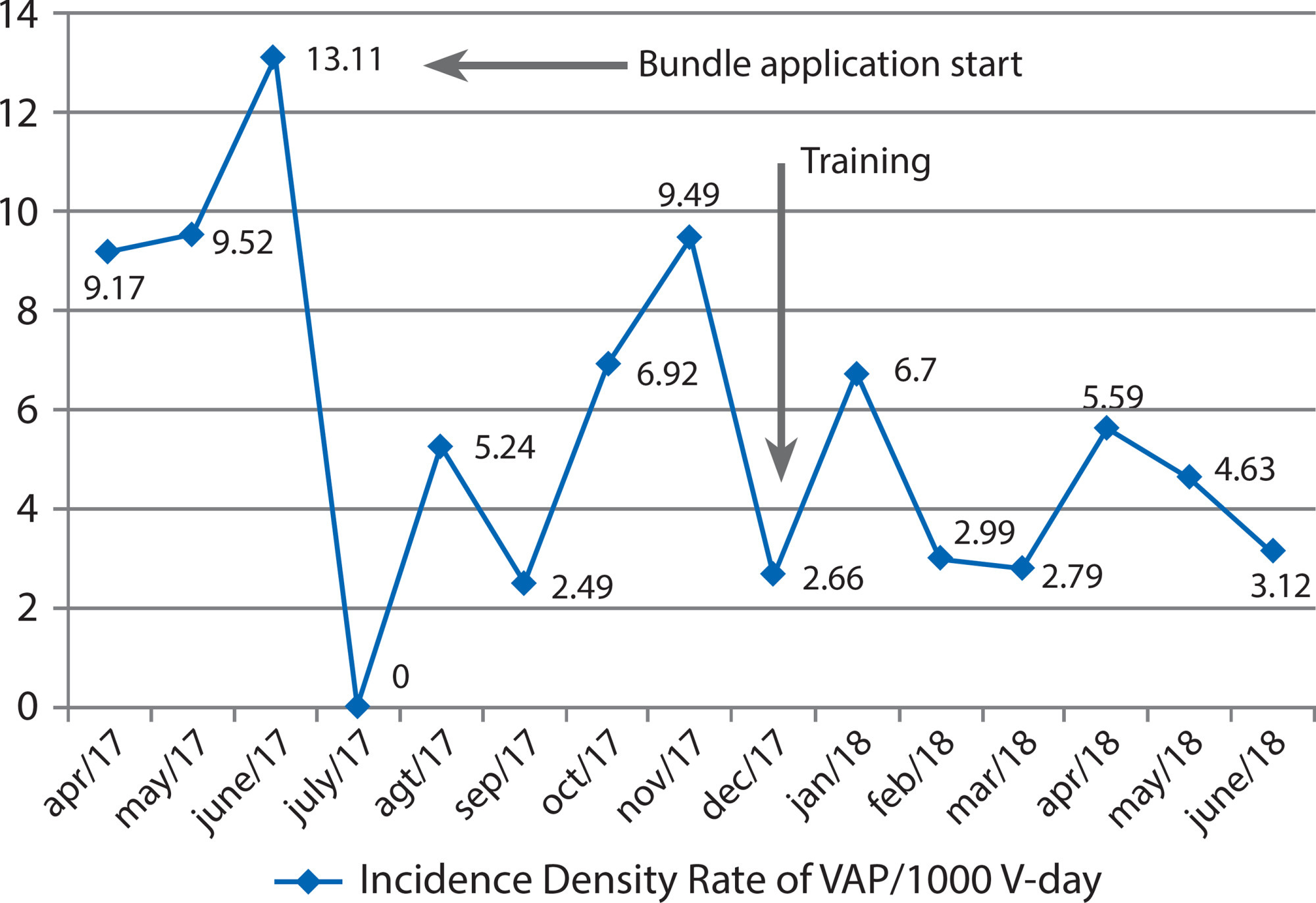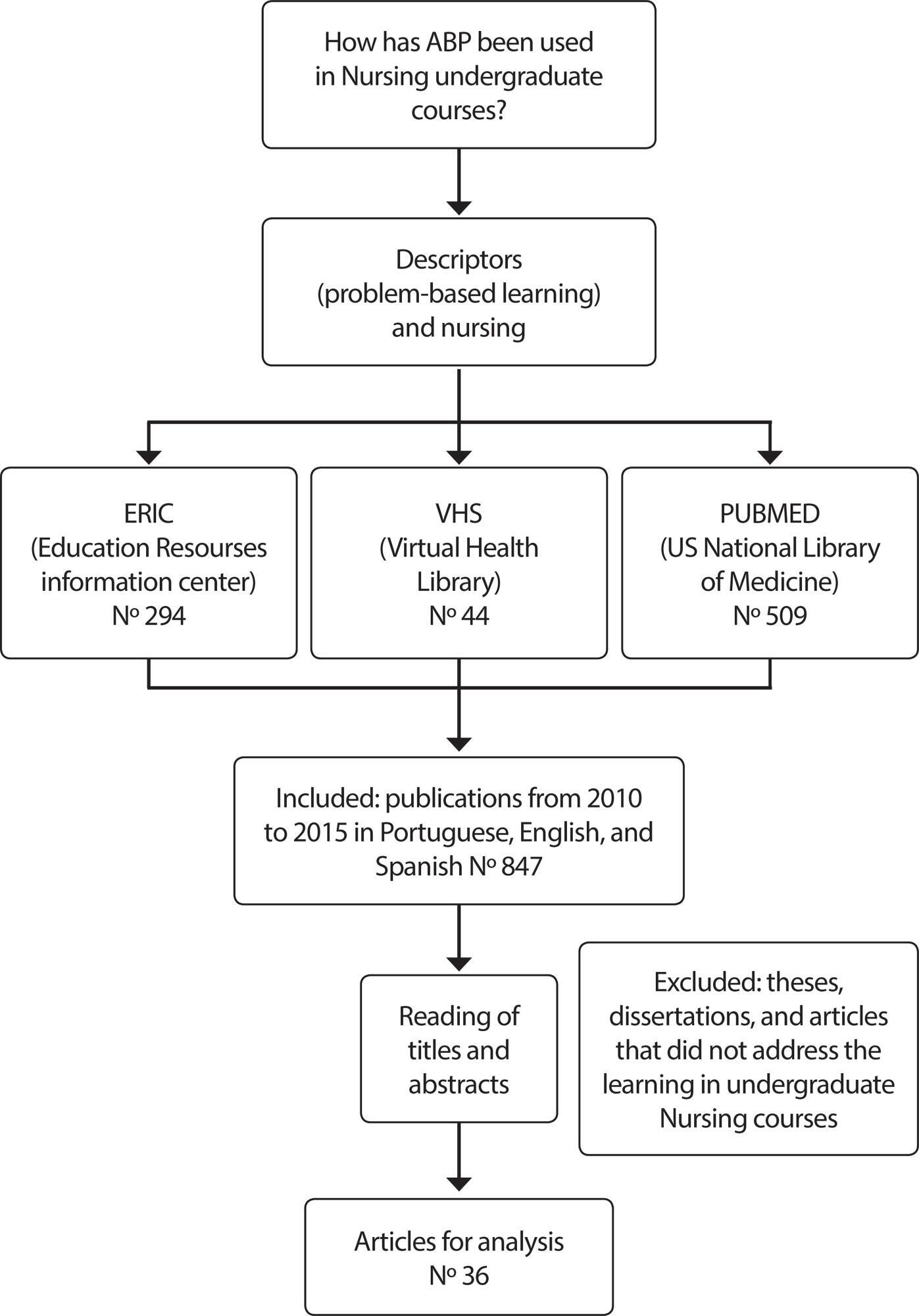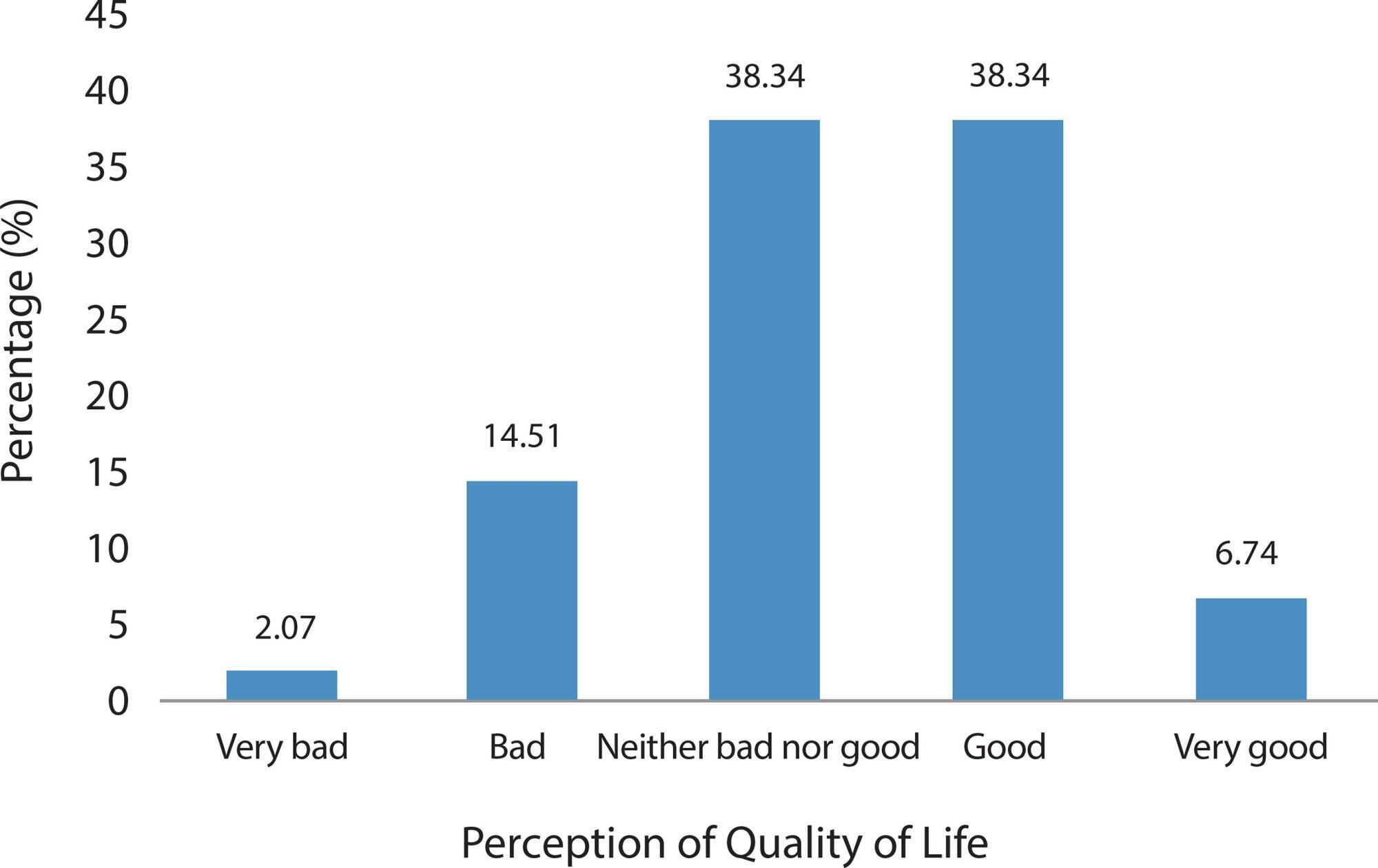-
RESEARCH01-01-2017
Developing skills learning in obstetric nursing: approaches between theory and practice
Revista Brasileira de Enfermagem. 2017;70(5):1054-1060
Abstract
RESEARCHDeveloping skills learning in obstetric nursing: approaches between theory and practice
Revista Brasileira de Enfermagem. 2017;70(5):1054-1060
DOI 10.1590/0034-7167-2016-0665
Views0See moreABSTRACT
Objective:
To analyze the development of professional skills in an obstetric nursing graduate course.
Method:
Qualitative research, applying semi-structured interviews with 11 students in the obstetric nursing specialization at the State University of Ceará. Data was submitted to thematic review.
Results:
According to the subjects, the course offers the development of skills to strengthen and expand the range of activities in obstetric nursing. Despite relying on previous knowledge and experience acquired by the students, there is a gap between the content taught and internship practice, presented as challenges and difficulties faced by the students. The findings suggest a need for curricular revision, incorporating active teaching-learning methodologies, to overcome the disjunction between theory and practice.
Final considerations:
Students are part of a corpus that is potentially implicated in the construction and transformation of thoughts and values set forth by educational and health institutions, and it is necessary to make changes in political and social organizations, with a focus on providing comprehensive and egalitarian care to the population.
-
RESEARCH01-01-2017
Chronic hepatitis B and D: prognosis according to Child-Pugh score
Revista Brasileira de Enfermagem. 2017;70(5):1048-1053
Abstract
RESEARCHChronic hepatitis B and D: prognosis according to Child-Pugh score
Revista Brasileira de Enfermagem. 2017;70(5):1048-1053
DOI 10.1590/0034-7167-2016-0205
Views1See moreABSTRACT
Objective:
compare chronic hepatitis B patients to those superinfected with hepatitis D virus, according to Child-Pugh score regarding disease severity.
Method:
retrospective descriptive study, performed with 59 patients followed in the ambulatory, of which 22 (37.3%) were chronically infected with hepatitis B virus (Group HBV) and 37 (62.7%) superinfected with Delta virus (Group HBV+HDV); variables of sex, age and items of Child-Pugh score were collected by consulting medical records.
Results:
out of the patients, 57.6% were male, with a mean age of 30.5 years. Score A, which indicates lesser severity, was found in 100% of group HBV and 78.4% of group HBV+HDV. Score B, which indicates greater severity, was found only in group HBV+HDV in 21.6% of the patients.
Conclusion:
by means of the Child-Pugh score, it was observed that patients with superinfection by HDV tended to present a worse prognosis.
-
RESEARCH01-01-2017
Humanization in the Intensive Care: perception of family and healthcare professionals
Revista Brasileira de Enfermagem. 2017;70(5):1040-1047
Abstract
RESEARCHHumanization in the Intensive Care: perception of family and healthcare professionals
Revista Brasileira de Enfermagem. 2017;70(5):1040-1047
DOI 10.1590/0034-7167-2016-0281
Views0See moreABSTRACT
Objective:
Understanding perceptions of family members and healthcare professionals about humanization at the Intensive Care Unit (ICU) to direct it to an educational action.
Method:
Exploratory descriptive and qualitative study conducted in an ICU level 3 of a public hospital in Porto Alegre, RS, Brazil, with fourteen subjects, eight family members and six healthcare professionals. Data collection carried out through semi-structured interviews and focus group. Content Analysis was used.
Results:
Emerged categories were: welcoming; communication; ethical and sensible professionalism; unfavorable aspects; perception on humanization; and religiosity/spirituality.
Final considerations:
Although the subjects have expressed their perceptions about humanization in different ways, both groups pointed out the same needs and priorities to improve humanization in Intensive Care. From the results, we created a reflective manual of humanizing assistance practices for professionals, a board to facilitate communication of these professionals with patients and a guideline book for family members.
-
RESEARCH01-01-2017
Knowledge of adolescents regarding sexually transmitted infections and pregnancy
Revista Brasileira de Enfermagem. 2017;70(5):1033-1039
Abstract
RESEARCHKnowledge of adolescents regarding sexually transmitted infections and pregnancy
Revista Brasileira de Enfermagem. 2017;70(5):1033-1039
DOI 10.1590/0034-7167-2016-0531
Views0See moreABSTRACT
Objective:
To investigate the knowledge of adolescents related to sexually transmitted infections (STIs), AIDS, and pregnancy, and understand the role of school in sex education.
Method:
A qualitative descriptive study, developed through a semi-structured interview and a form for participant characterization, with 22 high school students from a public school aged 16 to 19 years. Data were submitted to content analysis.
Results:
After analysis, four thematic categories were developed: sexuality and sex education; understanding of risk behaviors; knowledge of STI/AIDS; and knowledge of and practices for prevention.
Final considerations:
This study showed the need for preventive educational actions for adolescents, because the lack of information contributes to their vulnerability. The adolescents recognize the importance of sex education; therefore it is important to implement strategies to promote and protect health in the school environment to encourage and strengthen self-care in health.
-
RESEARCH01-01-2017
Care necessities: the view of the patient and nursing team
Revista Brasileira de Enfermagem. 2017;70(5):1026-1032
Abstract
RESEARCHCare necessities: the view of the patient and nursing team
Revista Brasileira de Enfermagem. 2017;70(5):1026-1032
DOI 10.1590/0034-7167-2016-0197
Views0See moreABSTRACT
Objectives:
To compare care necessities as perceived by the patient and nursing team and to investigate the sociodemographic factors associated with these perceptions.
Method:
A comparative study was conducted in units and hospitalized patients of a hospital institution in the state of São Paulo. The participants comprised 100 health professionals (50 nurses and 50 nursing technicians and auxiliaries) and 50 patients. A questionnaire was constructed and validated regarding care needs and was completed by the participants.
Results:
Considering cut-off value kappa ≥ 0.61, or that is, good and very good intervals, the greatest agreement between the perception of the patients and the nursing team was in the areas of: Care and Communication, both with 92.6% agreement; followed by Basic Care with 74.1%. The lowest value was found in the field of Care Planning and Organization, 64.3%.
Conclusion:
In a general manner, there was an agreement between the care needs from the view of the patients themselves and the nursing team.
-
RESEARCH01-01-2017
Critical incidents connected to nurses’ leadership in Intensive Care Units
Revista Brasileira de Enfermagem. 2017;70(5):1018-1025
Abstract
RESEARCHCritical incidents connected to nurses’ leadership in Intensive Care Units
Revista Brasileira de Enfermagem. 2017;70(5):1018-1025
DOI 10.1590/0034-7167-2016-0137
Views0See moreABSTRACT
Objective:
The goal of this study is to analyze nurses’ leadership in intensive care units at hospitals in the state of São Paulo, Brazil, in the face of positive and negative critical incidents.
Method:
Exploratory, descriptive study, conducted with 24 nurses by using the Critical Incident Technique as a methodological benchmark.
Results:
Results were grouped into 61 critical incidents distributed into categories. Researchers came to the conclusion that leadership-related situations interfere with IC nurses’ behaviors. Among these situations they found: difficulty in the communication process; conflicts in the daily exercise of nurses’ activities; people management; and the setting of high quality care targets.
Final considerations:
Researchers identified a mixed leadership model, leading them to the conclusion that nurses’ knowledge and practice of contemporary leadership theories/styles are crucial because they facilitate the communication process, focusing on behavioral aspects and beliefs, in addition to valuing flexibility. This positively impacts the organization’s results.
-
RESEARCH01-01-2017
Cross-cultural adaptation and validation of the Moral Distress Scale-Revised for nurses
Revista Brasileira de Enfermagem. 2017;70(5):1011-1017
Abstract
RESEARCHCross-cultural adaptation and validation of the Moral Distress Scale-Revised for nurses
Revista Brasileira de Enfermagem. 2017;70(5):1011-1017
DOI 10.1590/0034-7167-2016-0518
Views0See moreABSTRACT
Objective:
Cross-culturally adapt and validate the Moral Distress Scale-Revised for nurses.
Method:
Quantitative, analytical cross-sectional study conducted with 157 nurses of two hospital institutions of Southern Brazil, one public and one philanthropic. Procedures conducted: cultural adaptation of the instrument according to international recommendations; validation for the Brazilian context.
Results:
Face and content validation was considered satisfactory as assessed by a specialist committee and a pretest. The instrument demonstrated satisfactory internal consistency through frequency and intensity analysis per question in the 157 items and per subgroups of the various hospital units. Cronbach’s alpha was 0.88 for the instrument and between 0.76 and 0.94 for hospital units. Pearson’s correlation found a moderate association for moral distress among nurses.
Conclusion:
The Moral Distress Scale-Revised – Brazilian version is a valid instrument for the assessment of moral distress in nurses.
-
RESEARCH01-01-2017
Sexual orientation and quality of life of people living with HIV/Aids
Revista Brasileira de Enfermagem. 2017;70(5):1004-1010
Abstract
RESEARCHSexual orientation and quality of life of people living with HIV/Aids
Revista Brasileira de Enfermagem. 2017;70(5):1004-1010
DOI 10.1590/0034-7167-2016-0420
Views0See moreABSTRACT
Objective:
To analyze whether sexual orientation affects the quality of life of people living with HIV/Aids (PLWHA).
Method:
A cross-sectional analytical study was carried out with 146 PLWHA in Teresina, capital city of the state of Piauí, in 2013, by means of the WHOQOL-HIV-bref. Descriptive analysis and multiple linear regression were used for data analysis.
Results:
There was a prevalence of men (63.7%), non-heterosexual (57.0%), aged between 19 and 39 years (89%). Of the total, 75.5% mentioned presence of negative feelings, such as fear and anxiety, and 38% reported have suffered stigma. With regard to the dimensions investigated, the most affected were “environment” and “level of independence”. Non-heterosexual orientation was negatively associated with quality of life in almost all dimensions.
Conclusion:
Living with HIV/Aids and having a non-heterosexual orientation have a negative impact on quality of life.
-
ORIGINAL ARTICLE08-19-2019
Mobile application for the teaching of the International Classification for Nursing Practice
Revista Brasileira de Enfermagem. 2019;72(4):1020-1027
Abstract
ORIGINAL ARTICLEMobile application for the teaching of the International Classification for Nursing Practice
Revista Brasileira de Enfermagem. 2019;72(4):1020-1027
DOI 10.1590/0034-7167-2018-0751
Views0See moreABSTRACT
Objective:
Developing a mobile application for the teaching of the International Classification for Nursing Practice.
Methods:
Methodological applied research for technological production, performed in three phases of the contextualized instructional design model: analysis, design and development.
Results:
The application has an initial screen, which provides information about the team and its purpose. Then, four moblets are listed, including presentation, user’s guide consisting of five modules, educational games and five clinical cases. The references on which the application was based are also presented.
Final considerations:
It was possible to develop an application with the potential to promote the knowledge of nursing students and professionals about this classification system.

-
ORIGINAL ARTICLE08-14-2020
Education to prevent ventilator-associated pneumonia in intensive care unit
Revista Brasileira de Enfermagem. 2020;73(6):e20190477
Abstract
ORIGINAL ARTICLEEducation to prevent ventilator-associated pneumonia in intensive care unit
Revista Brasileira de Enfermagem. 2020;73(6):e20190477
DOI 10.1590/0034-7167-2019-0477
Views0INTRODUCTIONVentilator-Associated Pneumonia (VAP) is one of the complications related to the care of patients hospitalized in the Intensive Care Unit (ICU), which, according to consulted authors, exceeds the mortality rates of other Healthcare Related Infections (HRI). VAP is the second most frequent infection in patients admitted to the ICU, as well as the most prevalent […]See more
-
08-19-2019
Degree in Nursing: education through problem-based learning
Revista Brasileira de Enfermagem. 2019;72(4):1071-1077
Abstract
Degree in Nursing: education through problem-based learning
Revista Brasileira de Enfermagem. 2019;72(4):1071-1077
DOI 10.1590/0034-7167-2018-0298
Views0See moreABSTRACT
Objective:
To describe how undergraduate courses in Nursing are using the problem-based learning (PBL).
Method:
Integrative literature review, from searches in the databases Education Resources Information Center (ERIC), Latin American and Caribbean Health Sciences Literature (Lilacs), and PubMed, from 2010 to 2015. 36 articles were analyzed.
Results:
A teaching method used in all continents, the PBL enables improvement of the critical thinking, autonomy, motivation for learning, active search attitude, ability to work in teams, and problem-solving. Difficulties and challenges relate to the training of students and teachers to understand the principles of the method.
Final considerations:
The benefits of PBL coincide with the needs of nursing training, but its applicability demands constant review in seeking to develop the skills necessary for this training.

-
ORIGINAL ARTICLE12-13-2019
Mobile health technology for gestational care: evaluation of the GestAção’s app
Revista Brasileira de Enfermagem. 2019;72:266-273
Abstract
ORIGINAL ARTICLEMobile health technology for gestational care: evaluation of the GestAção’s app
Revista Brasileira de Enfermagem. 2019;72:266-273
DOI 10.1590/0034-7167-2018-0641
Views0See moreABSTRACT
Objective:
to evaluate the GestAção application, based on the experience of pregnant women use.
Method:
an evaluative, applied, methodological, quantitative-qualitative study. This tool was evaluated by 13 pregnant women through questionnaires for sociodemographic profile characterization and Likert scale use to calculate Content Validity Index (CVI); and semi-structured interview, with analysis based on Semiotics.
Results:
the study evidenced a significant level of satisfaction of pregnant women with the application use, considering the objectives (CVI = 0.92), structure and presentation (CVI = 0.86), and relevance (CVI = 0.92).
Final considerations:
the GestAção application obtained an overall CVI of 0.90, evidencing it as a facilitating and supporting technology in the empowerment of pregnant women interested in obtaining knowledge about pregnancy. It has been proved to be a powerful tool to qualify good practices in nursing consultation.
-
REFLECTION06-29-2020
Children’s (in)visibility in social vulnerability and the impact of the novel coronavirus (COVID-19)
Revista Brasileira de Enfermagem. 2020;73:e20200302
Abstract
REFLECTIONChildren’s (in)visibility in social vulnerability and the impact of the novel coronavirus (COVID-19)
Revista Brasileira de Enfermagem. 2020;73:e20200302
DOI 10.1590/0034-7167-2020-0302
Views0See moreABSTRACT
Objective:
To examine the impact of the infection by the novel coronavirus on Brazilian children in situation of social vulnerability based on the Millennium Sustainable Development Goals.
Method:
Reflective study based on discursive formulation in three aspects: principles of the objectives and goals for the millennium sustainable development; impact of the pandemic on the health of children and their families living in social vulnerability; and the role of pediatric nursing in the care provided – limits and challenges.
Results:
In January 2020, the news of COVID 19 is released as a pandemic. In Brazil, children and families are still without access to basic rights, thereby increasing their risks of social vulnerability because of the quarantine. The nursing field has an important role in monitoring children and their families, offering guidance in search for solutions and preventing contamination.
Conclusion:
There are still challenges to be overcome by the children and their families in situations of vulnerability against COVID-19.
-
ORIGINAL ARTICLE07-10-2020
Profile of nursing students: quality of life, sleep and eating habits
Revista Brasileira de Enfermagem. 2020;73:e20190365
Abstract
ORIGINAL ARTICLEProfile of nursing students: quality of life, sleep and eating habits
Revista Brasileira de Enfermagem. 2020;73:e20190365
DOI 10.1590/0034-7167-2019-0365
Views0See moreABSTRACT
Objective:
to profile and analyze sleep quality, quality of life and eating habits of nursing students.
Methods:
a cross-sectional, comparative and correlational study with the following variables: sociodemographic characteristics, Pittsburgh sleep quality index, quality of life and eating habits. One hundred ninety-five students participated in the study.
Results:
participants were on average 24 years old. Results showed that females were prevalent (87.1%); 71.0% of the students had poor sleep quality; 98.9% used electronic devices before bedtime. Self-perception of quality of life was indifferent (38.3%), and self-perception of general health, 36.9% expressed satisfaction. Among the participants, 45.13% consumed one portion of fruit and 40.66% two to three portions of vegetables daily.
Conclusion:
the study allowed the profile of these students, sedentary, overweight and poor sleep quality young students who studied and worked.

-
ORIGINAL ARTICLE06-09-2020
Stress of nursing professionals working in pre-hospital care
Revista Brasileira de Enfermagem. 2020;73(2):e20180660
Abstract
ORIGINAL ARTICLEStress of nursing professionals working in pre-hospital care
Revista Brasileira de Enfermagem. 2020;73(2):e20180660
DOI 10.1590/0034-7167-2018-0660
Views0See moreABSTRACT
Objectives:
To analyze the factors related to the occupational stress of a Mobile Emergency Care Service (Samu) nursing team.
Methods:
This is a descriptive study, with a quantitative approach, performed with nursing professionals from Samu service of a city of Pernambuco. A sociodemographic questionnaire and the Lipp’s Stress Symptom Inventory were used.
Results:
The participants presenting stress (24.6%) were classified in the phases: resistance (19.7%), exhaustion (4.4%) and near exhaustion (0.5%). It was also observed an association of stress level with the following factors: gender, sleep quality, professional autonomy restriction, emotional exhaustion with work performed and work in inadequate or unhealthy physical facilities.
Conclusions:
Although showing low occurrence of stress, this study pointed out the profile that presents the highest risk of developing occupational stress, through the factors significantly associated with stress in the studied population.
-
ORIGINAL ARTICLE07-10-2020
Nursing appeals on social media in times of coronavirus
Revista Brasileira de Enfermagem. 2020;73:e20200225
Abstract
ORIGINAL ARTICLENursing appeals on social media in times of coronavirus
Revista Brasileira de Enfermagem. 2020;73:e20200225
DOI 10.1590/0034-7167-2020-0225
Views0See moreABSTRACT
Objective:
to know and analyze the nursing appeals on social media during the COVID-19 pandemic.
Method:
it is a documentary, qualitative, descriptive, and exploratory research with data collected in publications in two social media. Two hundred ninety-five publications of nursing professionals published on Twitter and Instagram between March 11 and 20, 2020 were submitted to content analysis using ATLAS.ti resources.
Results:
four thematic categories emerged: #stayathome, #whereismyPPE, #nowweareheroes, #nothingnewinthefrontline, according to frequency of communications. The appeals show a relationship with the social relevance of nursing professional work and with the conditions required for its exercise.
Final considerations:
old and new challenges of the profession were placed on the agenda in social media, especially related to the workforce and instruments of labor. These speeches can serve as a foundation for policies to improve working conditions and promote appreciation of the profession.

Search
Search in:
Nuvem de Tags
Adolescente (85) Atenção Primária à Saúde (239) COVID-19 (91) Criança (91) Cuidados de Enfermagem (269) Educação em Enfermagem (151) Educação em Saúde (139) Enfermagem (930) Enfermagem Pediátrica (86) Estudantes de Enfermagem (77) Estudos de Validação (131) Família (87) Idoso (208) Promoção da Saúde (99) Qualidade de Vida (104) Saúde do Trabalhador (86) Saúde Mental (145) Saúde Pública (82) Segurança do Paciente (150) Tecnologia Educacional (100)



